The Rich History of Qinglian Temple: A Must-Visit Destination in China
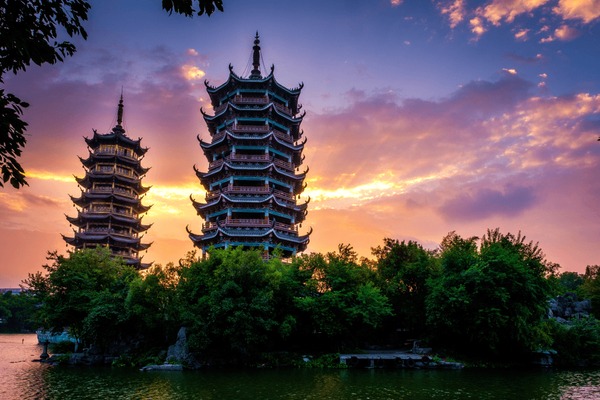
An Essential Guide to Visiting Qinglian Temple
In This Guide
- An Essential Guide to Visiting Qinglian Temple
- The Rich History and Legends of Qinglian Temple
- Main Highlights: What You Absolutely Can’t Miss
- Planning Your Visit: A Practical Guide
- Tickets: Prices, Booking, and Tips
- How to Get There: A Complete Transportation Guide
- Local Cuisine and Accommodation Nearby
- Frequently Asked Questions
- Final Thoughts on Your Trip
Nestled on the scenic slopes of Xiaoshi Mountain in Zezhou County, Qinglian Temple (青莲寺) stands as a testament to centuries of spiritual heritage and architectural finesse. Originally founded during the Northern Qi Dynasty, this temple complex has evolved into one of China’s most revered Buddhist sites, known not only for its stunning natural backdrop but also for its significant cultural legacy. With a history that intertwines with the early teachings of the Maitreya Pure Land Sect, Qinglian Temple embodies a harmonious blend of devotion and artistry that draws visitors from around the world.
As you approach the temple, the majestic peaks of Fushan Mountain and Jue Mountain frame the landscape, creating a breathtaking view that enhances the temple’s serene atmosphere. The gentle flow of the Danshui River below mirrors the tranquil essence that pervades this sacred space. The temple’s name, which translates to “Green Lotus Temple,” is derived from the revered image of Sakyamuni Buddha seated upon a lotus, symbolizing purity and enlightenment.
Qinglian Temple is not merely a place of worship; it is a cultural treasure chest housing extraordinary Tang and Song Dynasty sculptures that offer a glimpse into the rich Buddhist art tradition. Among its highlights are the Tang Dynasty painted sculptures in the Maitreya Hall and the unique Corner Gods in the Sutra Repository, making it a must-visit for history buffs and art enthusiasts alike.
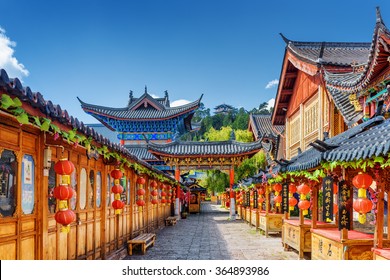
Qinglian Temple.
Exploring the temple grounds, visitors will encounter ancient cypress trees, including the legendary Mother and Son Cypress, which adds a layer of natural beauty and a sense of timelessness to the experience. Whether you are seeking spiritual solace, artistic inspiration, or simply a peaceful retreat, Qinglian Temple promises an unforgettable journey into the heart of Chinese culture and history.
Key Highlights:
- Historical Significance: Founded in the 6th century, associated with the eminent monk Huiyuan.
- Architectural Beauty: A mix of ancient and contemporary structures, with exquisite carvings and murals.
- Cultural Treasures: Home to unique sculptures and relics that showcase Buddhist artistry.
- Natural Surroundings: Stunning landscapes that enhance the spiritual experience.

Qinglian Temple.
Visiting Qinglian Temple is not just about exploring a historical site; it is an invitation to immerse yourself in the profound spiritual heritage of China. Prepare to be enchanted by the tranquil beauty and rich history that this extraordinary temple has to offer.
The Rich History and Legends of Qinglian Temple
Nestled on the verdant slopes of Xiaoshi Mountain in southeastern Shanxi, Qinglian Temple (青莲寺) is a site steeped in history and rich in legends. Originally founded during the Tianbao period of the Northern Qi Dynasty (550-577 AD) by the esteemed monk Huiyuan, this temple has captivated visitors for centuries with its spiritual significance and breathtaking surroundings.
A Journey Through Time
Origins and Early Significance
Initially named Qinghua Temple, Qinglian Temple was established as a center for Buddhist learning and practice. Master Huiyuan, known as the “Great Master of Qi and Sui” and the “Dragon among Monks,” was instrumental in elevating the temple’s status. His dedication to Buddhist teachings fostered a community of scholars, allowing Qinglian to flourish as a prominent institution in the Maitreya Pure Land Sect. This sect emphasizes the compassionate nature of Maitreya Buddha, making the temple a beacon of hope and aspiration for many.
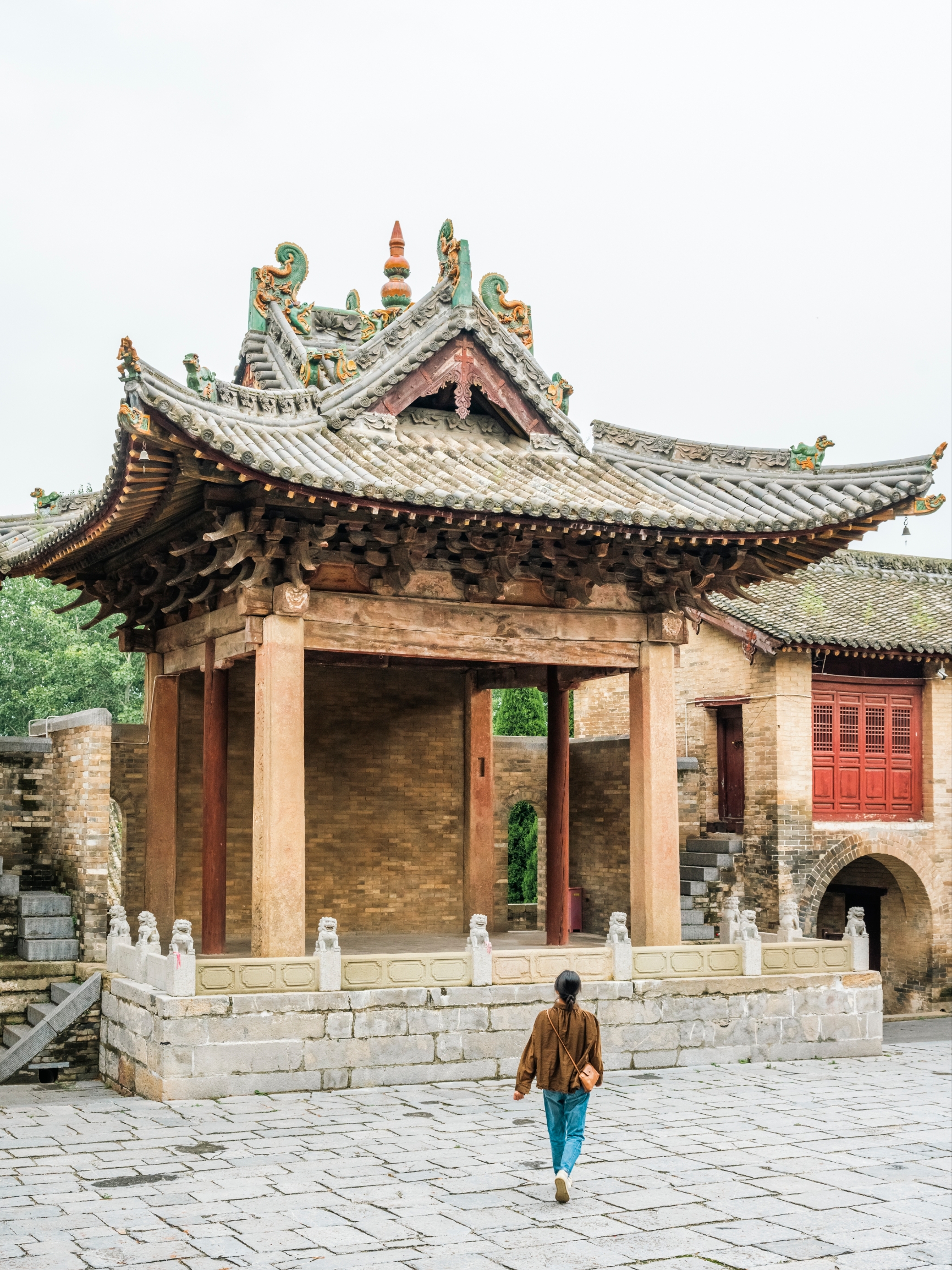
Qinglian Temple.
Architectural Marvels
Qinglian Temple is divided into distinct sections—upper and lower temples—each showcasing exquisite architectural details and historical artifacts. The lower temple is renowned for its six painted sculptures from the Tang Dynasty, which are considered unparalleled in artistry. Visitors often marvel at the four “Corner Gods” found in the Sutra Repository of the upper temple, unique to this site and affectionately referred to as the temple’s hardest workers. These deities symbolize strength and endurance, embodying the spirit of the temple that has withstood the tests of time.
Legends Interwoven with History
The Tale of the Lotus
The temple’s name, “Qinglian,” translates to “Blue Lotus,” a flower revered in Buddhism for its purity and beauty. The blue lotus is often associated with the highest spiritual attainment, and it is said that the Buddha himself sits upon a lotus platform. This symbolism is deeply rooted in the temple’s identity, making it a pilgrimage site for those seeking enlightenment and inner peace.
The Cypress and the Ginkgo
Among the temple’s ancient trees, the affectionate Mother and Son Cypress and the 1,400-year-old ginkgo couple tell a love story that has echoed through the ages. Legend has it that these trees were once human lovers who chose to transcend mortal existence, transforming into trees to remain together eternally. Visitors are often drawn to these trees, believing that listening to their whispers can reveal age-old wisdom.
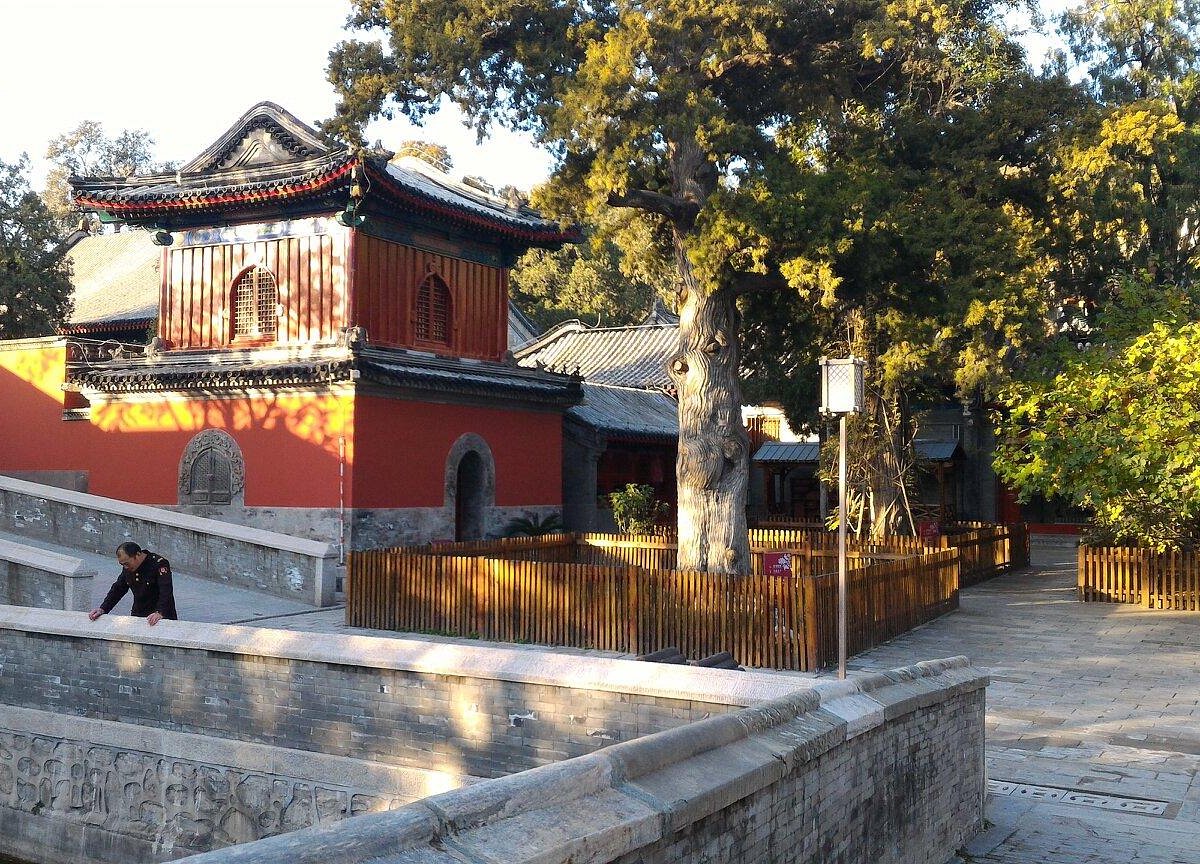
Qinglian Temple.
Cultural Heritage and Legacy
A Scholarly Hub
Qinglian Temple is not just a religious site; it has also served as a scholarly hub. Throughout history, it has attracted Buddhist elites who were trained in various disciplines of Buddhist thought. The temple’s rich repository of texts and teachings has contributed significantly to the development of Buddhist philosophy in China.
Preservation of Art
The temple is recognized as a national key cultural relic protection unit, reflecting its significance in Chinese heritage. The artistry of its murals and sculptures is unparalleled, making it a treasure trove for art enthusiasts and historians alike. The temple’s intricate design and serene environment continue to inspire countless visitors who seek a deeper understanding of Chinese culture and religion.
Conclusion
With its profound history, enchanting legends, and stunning natural beauty, Qinglian Temple stands as a testament to the enduring legacy of Buddhism in China. Whether you are a seeker of spiritual solace or an admirer of architectural brilliance, a visit to Qinglian Temple offers an unforgettable journey into the heart of China’s rich cultural tapestry.
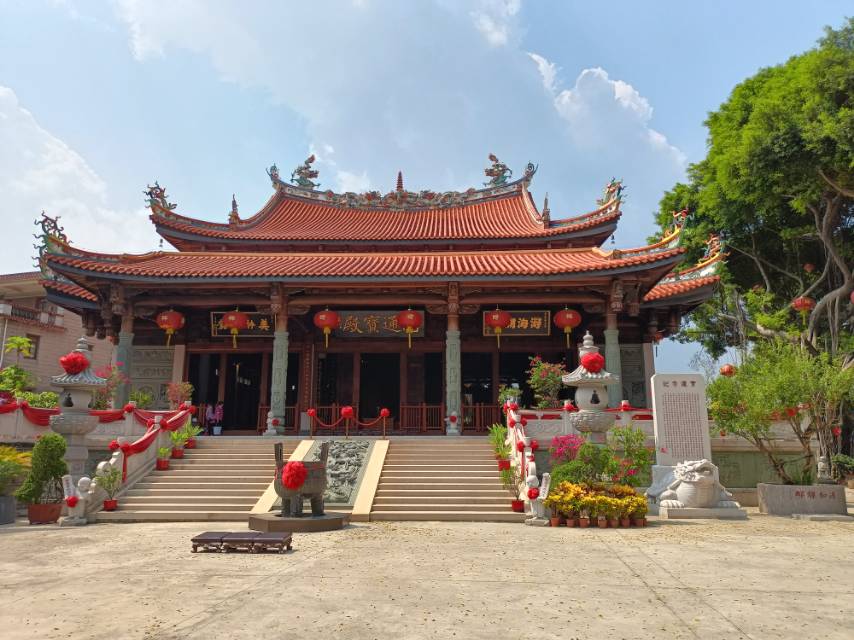
Qinglian Temple.
Main Highlights: What You Absolutely Can’t Miss
Discover the Essential Highlights of Qinglian Temple
Nestled in the lush hillsides of Xiaoshi Mountain, southeast of Jincheng City, Qinglian Temple (青莲寺) stands as a testament to the rich tapestry of Chinese history and Buddhist culture. This revered site offers visitors a profound experience, blending natural beauty with spiritual significance. Here are the key highlights that you absolutely cannot miss when visiting this remarkable temple.
1. Ancient Architectural Marvels
- Dual Temple Complex: The temple is divided into two sections: the upper and lower temples. Each segment showcases exquisite architecture and intricate details that reflect the artistic mastery of ancient Chinese craftsmen.
- Maitreya Hall: Home to six stunning Tang Dynasty painted sculptures, this hall is a must-see. These artworks are not only unique but also represent a significant part of the temple’s historical legacy.
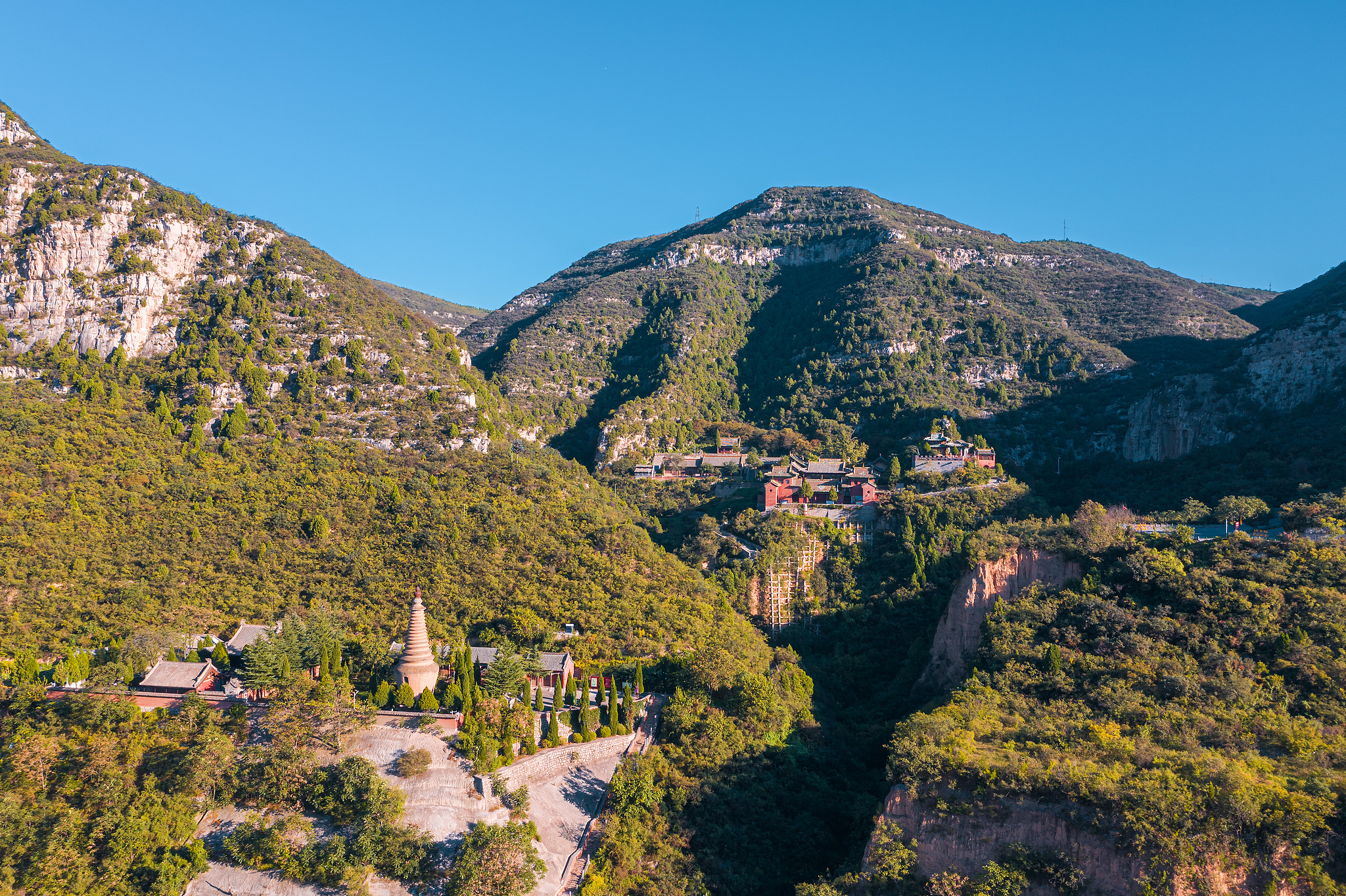
Qinglian Temple.
2. Breathtaking Natural Scenery
- Surrounding Landscape: The temple’s location offers panoramic views of the majestic Fushan and Jue Mountains, creating a picturesque backdrop. The Danshui River meanders gracefully below, enhancing the tranquil atmosphere.
- Remarkable Flora: Notable ancient trees, including the affectionate Mother and Son Cypress and a remarkable pair of 1,400-year-old ginkgo trees, add to the temple’s charm. These living monuments invite visitors to connect with their rich histories.
3. Cultural Significance
- Historical Roots: Founded during the Tianbao period of the Northern Qi Dynasty, Qinglian Temple was established by the eminent monk Huiyuan. It was originally named Qinghua Temple and has since evolved into a pivotal center for Buddhist teachings.
- Maitreya Pure Land Sect: Recognized as one of the earliest temples of this sect in China, Qinglian Temple holds immense importance within the Buddhist community. Its scholarly and martial heritage is celebrated, earning it the moniker “scholarly Qinglian, martial Shaolin.”
4. Unique Artworks
- Sutra Repository: The upper temple features the only known “Corner Gods” sculptures in the country, which symbolize the temple’s strength and resilience throughout centuries.
- Arhat Halls: Admire the exquisite Song Dynasty statues of the Eighteen Arhats, which depict the legendary disciples of Buddha and are revered for their artistic value.

Qinglian Temple.
5. Spiritual Atmosphere
- Lotus Symbolism: The temple is named after the Qinglian, or blue lotus, which holds significant spiritual meaning in Buddhism. As a symbol of purity and enlightenment, the blue lotus elevates the temple’s spiritual ambiance.
- Meditative Environment: The serene setting, enhanced by the sound of rustling leaves and flowing water, provides an ideal space for reflection and meditation.
6. Accessibility and Visitor Experience
- Free Entry: Qinglian Temple is open for visitors without an entrance fee, making it accessible for everyone interested in exploring its history and beauty.
- Guided Tours: While no tickets are required, consider joining a guided tour to enrich your understanding of the temple’s historical context and significance.
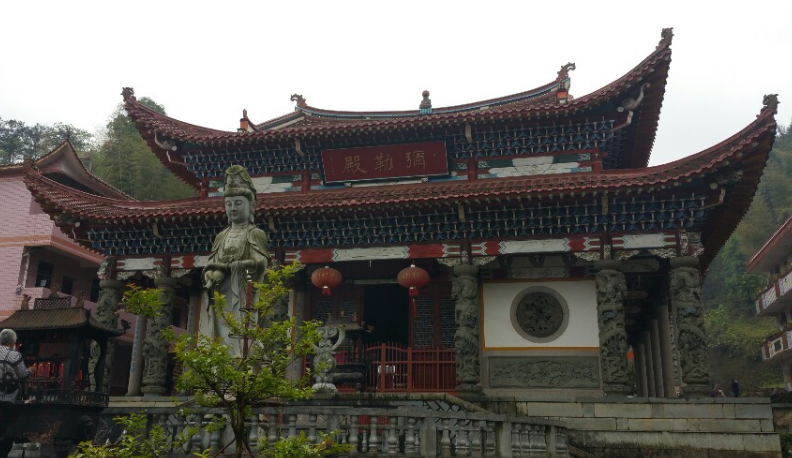
Qinglian Temple.
Final Thoughts
A visit to Qinglian Temple is more than just a journey to a historical site; it’s an opportunity to immerse yourself in the spiritual essence of Buddhism and the natural beauty of Shanxi Province. Be sure to take your time to explore the intricate details of the architecture, soak in the stunning landscapes, and reflect on the profound history that this temple encapsulates. Whether you’re a history enthusiast, a cultural explorer, or someone seeking tranquility, Qinglian Temple promises an unforgettable experience.
Planning Your Visit: A Practical Guide
Getting to Qinglian Temple
Nestled in the picturesque landscape of southeastern Shanxi, Qinglian Temple (青莲寺) can be found 17 kilometers southeast of Jincheng City, on the slopes of Xiaoshi Mountain. To reach this serene sanctuary, travelers have several options:
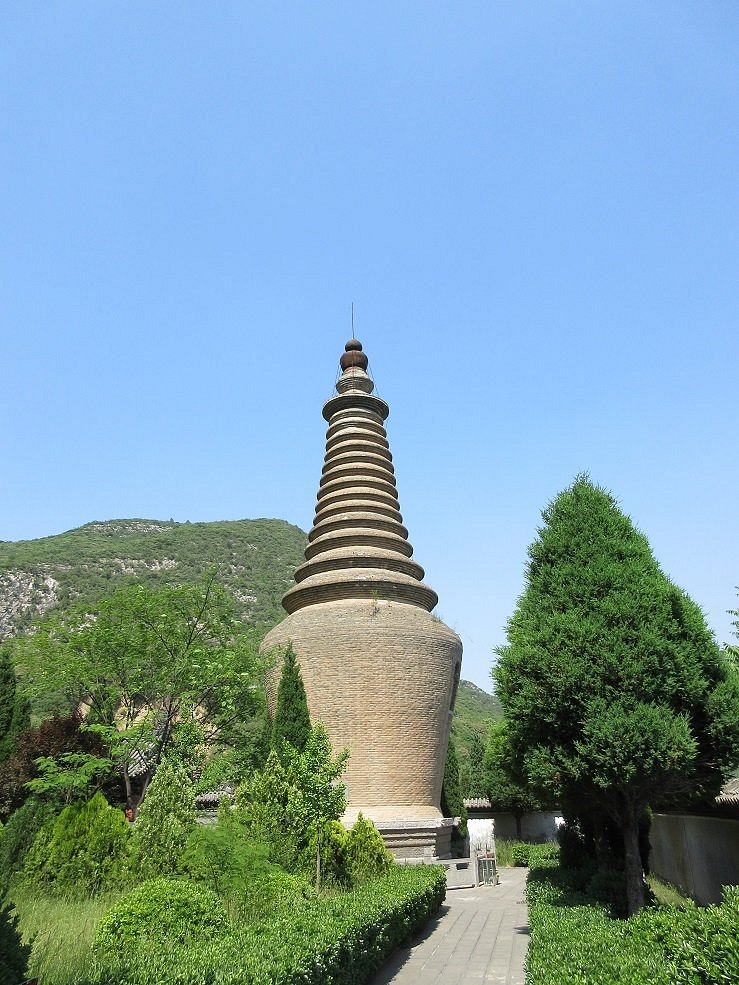
Qinglian Temple.
-
By Car: The most convenient way to access Qinglian Temple is by driving. The scenic Taihang No. 1 Tourist Highway provides a beautiful backdrop as you navigate towards the temple. If you don’t have a vehicle, consider renting one or hiring a car service for a more comfortable journey.
-
By Public Transport: Buses are available from Jincheng City to the Zezhou County area. Look for local bus routes heading towards the temple; the ride will typically take around 30–40 minutes.
Admission Details
Visiting Qinglian Temple is a budget-friendly affair, as entry is free of charge. However, it is advisable to make an online reservation in advance, especially during peak tourist seasons, to secure your spot.

Qinglian Temple.
Recommended Duration of Visit
Plan to spend about 1 hour exploring the temple grounds. This allows ample time to appreciate the stunning architecture, the intricate sculptures, and the serene natural surroundings. If you are particularly interested in photography or want to meditate in the tranquil atmosphere, consider extending your visit.
Best Time to Visit
For an optimal experience, consider visiting during the spring (April to May) or autumn (September to October). These seasons showcase the temple in its full glory, with blooming flowers or vibrant autumn foliage enhancing the scenic beauty. Summers are also pleasant, making it a popular retreat for those seeking a break from the heat of the plains.

Qinglian Temple.
What to Expect
As one of the earliest temples of the Maitreya Pure Land Sect of Buddhism in China, Qinglian Temple boasts a rich historical and cultural significance. Here are some highlights to look forward to during your visit:
-
Architectural Beauty: The temple is divided into two sections: the ancient and the new. Marvel at the exquisite craftsmanship of the Maitreya Hall adorned with Tang Dynasty painted sculptures, and the Sakyamuni Hall, which features ornate Song Dynasty statues.
-
Natural Surroundings: The temple is enveloped by lush greenery and majestic mountains, providing a stunning backdrop. The nearby Danshui River adds to the serene ambiance, making it an ideal spot for reflection and tranquility.
-
Cultural Significance: Discover the fascinating history of the temple, originally founded by the esteemed monk Huiyuan during the Northern Qi Dynasty. The temple is often referred to as the “Buddhist Capital” and offers insights into the development of Buddhist thought in China.
Nearby Attractions
Qinglian Temple is situated in a region rich with history and natural beauty. While you’re in the area, consider visiting:
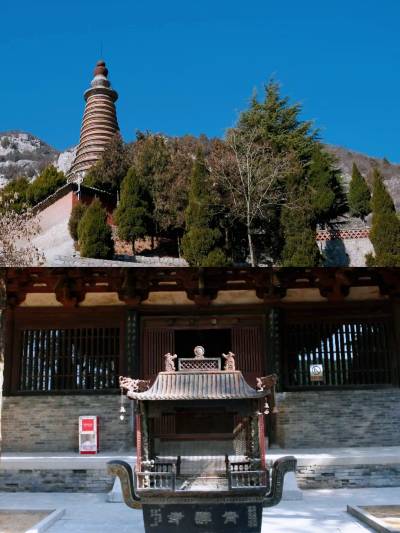
Qinglian Temple.
- Yuhuang Temple: Known for its colorful sculptures and murals.
- Situ Ancient Town: Experience traditional performances that bring local culture to life.
- Baima Temple Mountain Provincial Forest Park: Perfect for hiking and enjoying panoramic views of the surrounding landscape.
Where to Stay
For a comfortable stay, consider Jincheng Fengcheng Health Center, which offers luxurious accommodations and top-notch amenities. This five-star hotel is located in the northern suburbs of Jincheng, providing easy access to both Qinglian Temple and other local attractions.
Practical Tips
- Bring Essentials: Wear comfortable shoes and bring water, as you may want to explore the temple grounds and surrounding areas extensively.
- Respect the Culture: As a religious site, dress modestly and observe local customs. Silence and reverence are appreciated, especially in the prayer halls.
- Photography: Capture the beauty of the temple and its surroundings, but always be mindful of sacred spaces and people who may be there to pray.
With its rich history and breathtaking views, a visit to Qinglian Temple is a fulfilling experience for anyone interested in Chinese culture and spirituality. Plan ahead, embrace the serenity, and allow yourself to be transported through time in this remarkable sanctuary.
Tickets: Prices, Booking, and Tips
Visiting Qinglian Temple (青莲寺) is a unique experience that offers a glimpse into China’s rich Buddhist heritage without the burden of hefty entrance fees. Here’s all you need to know about accessing this extraordinary site, including ticket details, booking tips, and helpful advice for your visit.
Entrance Fees
One of the most appealing aspects of Qinglian Temple is that entry is completely free. This allows visitors to explore its stunning architecture, intricate sculptures, and serene surroundings without worrying about ticket costs.
Booking Your Visit
While no tickets are required for entry, it is advisable to make an online reservation in advance, especially during peak tourist seasons or weekends. Reservations can typically be made through travel platforms or directly through the temple’s official website. This ensures you can enjoy your visit without unexpected crowds or waiting times.
Recommended Duration
Plan to spend at least one hour at Qinglian Temple. This timeframe will give you enough opportunity to wander through the temple grounds, marvel at the ancient structures, and soak in the tranquil atmosphere. If you’re a history enthusiast or keen on photography, consider allocating more time to capture the temple’s beauty and explore its rich cultural significance.
Getting There
Qinglian Temple is located 17 kilometers southeast of Jincheng City, nestled on the hillside of Kipishi Mountain. The temple is accessible by local transport options, including buses and taxis, making it convenient for international travelers. If you prefer a more personal experience, consider renting a car to enjoy the scenic drive along the Taihang No. 1 Tourist Highway.
Tips for Your Visit
- Best Time to Visit: The ideal seasons to explore Qinglian Temple are spring (April-May) for blooming flowers and autumn (September-October) for stunning foliage. Summers are also pleasant, especially for wellness retreats, while winters are perfect for hot spring therapies in nearby areas.
- Cultural Etiquette: As a significant religious site, it’s important to dress modestly and maintain a respectful demeanor during your visit. Be mindful of other visitors who may be there for worship or reflection.
- Explore Surroundings: Don’t miss the chance to explore the beautiful scenery surrounding the temple, including the Danshui River and the majestic mountains that frame this historic site. Bringing a camera is highly recommended to capture the picturesque views.
Nearby Accommodations
If you’re planning to stay overnight, consider booking a room at one of the hotels in Jincheng City. The Jincheng Fengcheng Health Center is highly recommended for its luxurious amenities and proximity to local attractions, including Qinglian Temple.
With its rich history, breathtaking scenery, and free entry, Qinglian Temple is a must-visit destination for anyone interested in Chinese culture and Buddhism. Enjoy your journey into this serene haven, where history and nature beautifully intertwine.
How to Get There: A Complete Transportation Guide
Navigating Your Way to Qinglian Temple
Visiting Qinglian Temple (青莲寺), a historic and culturally rich site nestled in the scenic hills of Zezhou County, is an experience that combines spiritual reflection with breathtaking natural beauty. To make your journey as smooth as possible, here’s a comprehensive guide on how to reach this remarkable temple.
Getting to Jincheng
By Air:
The nearest major airport to Qinglian Temple is Jincheng Airport (Jicheng Air Base), which is approximately 20 kilometers northwest of the city center. Regular flights connect Jincheng to larger cities like Beijing and Shanghai, making air travel a convenient option for international visitors. From the airport, you can hire a taxi or arrange an airport transfer to take you directly to Jincheng.
By Train:
Jincheng is well-connected by rail, with the Jincheng Railway Station serving as a hub for trains coming from various parts of China. High-speed trains from cities like Beijing, Taiyuan, and Zhengzhou frequently arrive at this station. Once you arrive, you can take a taxi or a local bus to reach the city center or your accommodation.
By Bus:
Long-distance buses operate from major cities throughout Shanxi Province and beyond, arriving at the Jincheng Bus Station. This is a budget-friendly option, though it may take longer than traveling by train.
Local Transportation to Qinglian Temple
Once you are in Jincheng, Qinglian Temple is located about 17 kilometers southeast in Zezhou County. Here are the best ways to get there:
1. Taxi or Ride-Hailing Apps:
The most direct and convenient way to reach Qinglian Temple is by taxi or ride-hailing services like Didi. The ride should take approximately 30-40 minutes, depending on traffic. Be sure to have the temple’s Chinese name (青莲寺) ready to show the driver.
2. Local Buses:
For a more economical option, you can take a local bus. Look for buses heading towards Zezhou County, which are frequent and affordable. Be sure to confirm with locals or check for signs indicating stops near Qinglian Temple, as the route may change.
3. Self-Driving:
If you prefer the flexibility of driving yourself, renting a car is an excellent way to explore the region. Major car rental companies operate in Jincheng. Follow the signs towards Zezhou County, and enjoy the scenic drive through the Taihang Mountains.
Accessibility and Practical Tips
- Online Reservations: While admission to Qinglian Temple is free, it’s advisable to check if online reservations are required, especially during peak visiting seasons.
- Best Time to Visit: The ideal seasons for visiting Qinglian Temple are spring (April-May) and autumn (September-October) for pleasant weather and stunning natural views.
- Local Accommodations: Consider staying in Jincheng for easy access to various attractions, including Qinglian Temple. There are numerous hotels ranging from budget to luxury, with the Jincheng Fengcheng Health Center being a highly recommended option for a comfortable stay.
Conclusion
Reaching Qinglian Temple is both straightforward and rewarding. Whether you choose to fly, take a train, or drive, the journey to this sacred site promises not only a glimpse into the rich tapestry of Chinese history and culture but also an opportunity to immerse yourself in the serene beauty of the surrounding landscape. Safe travels!
Local Cuisine and Accommodation Nearby
When visiting the revered Qinglian Temple, you’ll find yourself immersed not only in the rich cultural heritage of the site but also in the delightful flavors of local cuisine. The surrounding area, particularly Jincheng, offers a variety of dining options that showcase the gastronomic treasures of Shanxi Province, as well as comfortable accommodations to enhance your stay.
Culinary Delights Around Qinglian Temple
Signature Dishes
-
Yangcheng Fried Liver
A staple of local banquets, this dish features crispy pork liver complemented by a garlic-infused dipping sauce, making it a must-try for adventurous palates. -
Gaoping “Ten Bowls”
This traditional feast consists of an array of dishes, including Tianhe eggs and walnut meat, preserving the flavors of millennia-old sacrificial culture. -
Jincheng Guo You Rou (Stir-Fried Pork)
A local favorite, this dish combines tender pork with green beans or tomatoes, creating a savory harmony that is both comforting and satisfying. -
Lingchuan Dangshen Stewed Free-Range Chicken
This nourishing dish features slow-cooked chicken paired with codonopsis root, resulting in a rich broth that is as flavorful as it is wholesome.
Local Snacks
-
Jincheng Hele Noodles
Renowned among Shanxi’s top noodles, these chewy handmade noodles are served with pickled vegetables, offering a delightful balance of sour and spicy flavors. -
Yangcheng Meat Pot Stew
A comforting choice, this dish features slow-cooked beef or lamb in ceramic pots, yielding exceptionally tender meat and a robust broth. -
Lingchuan Beef Balls
Crispy on the outside and springy within, these beef balls are a popular street food, often enjoyed with a tangy local dipping sauce. -
Clear Soup Hele
A light yet flavorful soup accompanied by colorful toppings, this dish is perfect for a refreshing snack during your explorations.
Comfortable Stays Nearby
Recommended Accommodation: Jincheng Fengcheng Health Center
For a luxurious retreat after a day of exploring Qinglian Temple, consider staying at the Jincheng Fengcheng Health Center. Built to international five-star standards, this expansive hotel provides an exceptional environment with top-notch service and first-class facilities.
-
Location: Situated in the Fengcheng Health Demonstration Zone in the northern suburbs of Jincheng, offering convenient access to nearby attractions.
-
Amenities: The hotel features beautifully landscaped gardens, spacious rooms averaging over 50 square meters, smart devices for enhanced comfort, and a variety of themed functional areas, including leisure and wellness zones.
-
Service: Guests can expect attentive staff who are eager to assist with any needs, ensuring a seamless and enjoyable stay.
-
Price Range: With room rates ranging from 500 to 1000 RMB, the Jincheng Fengcheng Health Center offers excellent value for its luxury offerings.
Conclusion
Whether indulging in local culinary specialties or relaxing in a plush accommodation, your visit to Qinglian Temple will be enriched by the flavors and comforts of the surrounding region. Be sure to savor the unique tastes of Shanxi while enjoying the serene beauty of this historical site.
Frequently Asked Questions
Frequently Asked Questions about Qinglian Temple
1. What is Qinglian Temple’s historical significance?
Qinglian Temple, originally founded during the Tianbao period of the Northern Qi Dynasty, is a vital site in Chinese Buddhist history. Also known as the “First Temple of Jin and Wei Mountains and Rivers,” it was established by the eminent monk Huiyuan, who significantly influenced Buddhist teachings in China. The temple is revered for its painted sculptures and rich heritage, making it a national key cultural relic protection unit.
2. How do I get to Qinglian Temple?
Qinglian Temple is located 17 kilometers southeast of Jincheng City, nestled on the slopes of Kipishi Mountain. Visitors can access the temple via local buses or by renting a car for a more flexible journey. The scenic route offers captivating views of the surrounding mountains and rivers.
3. What are the main attractions within the temple complex?
The temple features two main sections: the upper and lower temples. Key highlights include:
– Maitreya Hall: Known for its unique Tang Dynasty painted sculptures.
– Sakyamuni Hall: Home to exquisite Song Dynasty statues of the Eighteen Arhats.
– Ming Dynasty stupa: A majestic structure surrounded by ancient trees, including a notable 1,400-year-old ginkgo couple.
4. Is there an entry fee to visit Qinglian Temple?
Entry to Qinglian Temple is free. However, visitors are encouraged to make an online reservation before their visit to help manage the flow of guests and preserve the serene atmosphere of the site.
5. What is the recommended length of stay at Qinglian Temple?
A visit to Qinglian Temple typically requires about one hour to fully appreciate its architectural beauty and historical significance. For those interested in a more in-depth exploration, allowing additional time for leisurely walks and photography is advisable.
6. Are there any facilities available for visitors?
While Qinglian Temple itself is primarily a religious and historical site, basic visitor facilities such as rest areas and informational signs are available. Visitors are encouraged to wear comfortable shoes due to the temple’s hilly terrain.
7. What is the best time to visit Qinglian Temple?
The ideal times to visit are in spring (April-May) for blooming flowers and autumn (September-October) for stunning foliage. The pleasant climate and scenic surroundings enhance the overall experience, making these seasons particularly attractive.
8. What nearby attractions should I consider visiting?
When visiting Qinglian Temple, consider exploring other nearby historical sites such as:
– Yuhuang Temple: Renowned for its colorful sculptures and murals.
– Situ Ancient Town: Known for its rich cultural heritage and immersive performances.
– Wangmangling: A breathtaking natural area perfect for hiking and photography.
By planning your visit to Qinglian Temple and its surrounding attractions, you can immerse yourself in the rich tapestry of Chinese history and culture.
Final Thoughts on Your Trip
As you prepare to conclude your journey at Qinglian Temple, take a moment to reflect on the rich tapestry of history and spirituality that envelops this remarkable site. Nestled amidst the breathtaking landscapes of southeastern Shanxi, this sacred space is not merely a destination but a profound experience that connects you to the essence of Chinese culture and Buddhist heritage.
Embrace the Serenity
Walking through the temple grounds, you are surrounded by ancient trees whispering tales of thousand-year-old love stories, while the artistic prowess displayed in the Tang Dynasty sculptures captivates your imagination. The harmonious blend of nature and spirituality found here is a testament to the monks who dedicated their lives to this sacred place, creating an ambiance that invites introspection and peace.
Key Takeaways
-
Historical Significance: As one of the earliest temples of the Maitreya Pure Land Sect, Qinglian Temple stands as a monument to the enduring legacy of Buddhism in China. The artistry of its painted sculptures and the architectural grandeur not only highlight its historical importance but also its influence on the spread of Buddhist teachings.
-
Cultural Richness: The temple’s historical narratives, intertwined with the natural beauty of its surroundings, provide a unique glimpse into the spirituality that has shaped the local culture. The stories of the eminent monk Huiyuan and his disciples enrich your understanding of the temple’s significance.
-
A Moment of Reflection: Allow yourself the time to meditate by the Danshui River or among the lush green flora surrounding the temple. These moments of solitude are essential for absorbing the serene energy that permeates this holy site.
A Journey Worth Taking
Whether you are a history buff, a seeker of spiritual enlightenment, or a traveler eager to immerse yourself in the beauty of ancient architecture, Qinglian Temple promises a memorable experience. As you depart, carry with you the tranquility and inspiration gained from this sacred ground, and let it resonate in your heart as you share your stories with others.
In summary, your visit to Qinglian Temple is not just an exploration of a cultural landmark; it is a journey into the heart of China’s spiritual heritage—one that continues to inspire and uplift all who walk its hallowed paths. May your travels always lead you to such enriching experiences.